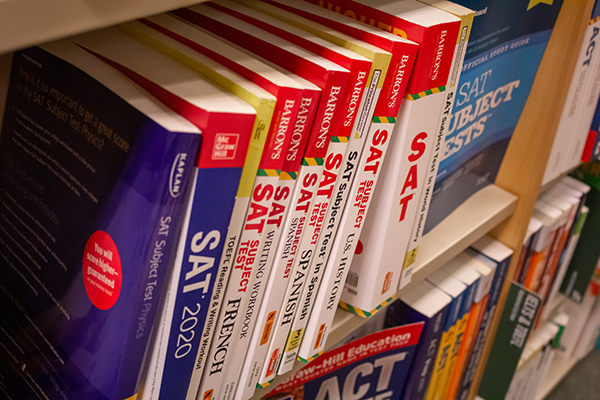Your Ultimate SAT Study Guide: Study Tips, Writing Practice, and More

To test or not to test? That is the question on the minds of high school students around the country, and right here in North Carolina, as a growing number of colleges and universities go test-optional. Most schools still accept standardized test scores. So, if you’re a student whose grades don’t really reflect the amazing student you are, or you’re interested in attending a highly selective college or university, submitting your standardized test scores could tip the scales in your favor. It’s up to you!
If you decide to tackle the SAT, how do you set yourself up for success? This SAT study guide will help you prepare for college admission testing and determine how you need to study to meet your goals.
When to Start Studying
The first item to check off your to-do list is to register for the SAT and choose a test date that works for your schedule. Next, get ready to hold yourself accountable. Create a schedule three months out from your test date. The key to nailing the SAT will be sticking to that schedule. You’ll also want to take a full-length test at that three-month mark. This will give you a feel of the test day experience and create a starting point.
When you’re six to eight weeks out from the test, The College Board recommends studying for 15 to 30 minutes per day. If you can’t carve out that time every day, start earlier, or practice longer on certain days when you do have more time.
You can find links to the best test preparation on CFNC’s website. This includes the online Khan Academy, which helps you set up and determine a study plan that best fits your lifestyle. According to the Khan Academy, students who used one of the program’s three best practices scored 39 points higher than students who did not use it for SAT practice. Those three best practices are leveling up your skills, taking full-length practice tests, and personalizing your practice.
Tips for Success
You may have already heard that the SAT is changing its format, including eliminating the optional essay and moving to a digital test for United States students by 2024. The new format of the SAT is set up in three sections: reading comprehension, writing and language, and math. You’ll have about three hours to complete all sections.
Your whole goal is to find each correct answer on the test, which means you will need to eliminate three incorrect ones. So, if you’re struggling to find the correct answer, go through each answer choice to find reasons why it is not the right answer.
Determine a reading strategy that works for you before test day. These methods include skimming the passage and answering the main idea questions first, then going back to certain sections to find the answers to more specific questions. Another option is to read the questions first. You then use the line numbers to help answer small detail questions. In turn, you end up reading part of the passage to get a solid understanding of it. Lastly, if you are a quick reader, you can read the passage in its entirety.
Don’t ignore passage introductions. This italicized blurb contains valuable information that gives you context about the passage and its author.
For the math portion, underline what you need to find. This will help you keep track of the value you are working to solve. Even though the SAT provides you with formulas, memorize them. This will save you time flipping back and forth.
Don’t Stress About the Test
No SAT study guide would be complete without a friendly reminder to go easy on yourself. So, the night before your test, don’t stress. You’ll want to focus on getting the best sleep possible. Then, on the day of, relax and know that the test is just a portion of your day.
During the test, make sure you are managing your time. You will not want to leave a question unanswered. The SAT does not penalize for incorrect answers. This means that even if you run out of time, make sure to fill in a bubble for each question you could not finish. Maybe your guess will give you a correct answer!
Wait for Your Scores and Get Ready for College
While waiting for your test scores to arrive, start or finish making your list of colleges you may want to attend. Use the CFNC College Search to compare schools and save your favorites in a free CFNC Account. When you register for your SAT, you can select colleges to receive the scores after the test. You’ll want to do this, as it may cost extra to send them after you register for the SAT. You don’t need to wait to apply to college until after you take the SAT; you can get started on that when the time is right for you. Either way, remember, applying to colleges is easy with the CFNC Application Hub.
Go Back to News